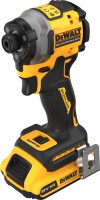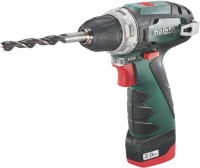Which is better: drill, screwdriver or drill-driver?

What is the name of the drill in another way? Is a drill and a screwdriver the same thing?
In our catalog of power tools, all electric drills and screwdrivers are in one section. The fact is that they have a similar principle of operation, because of which they are often confused with each other.
Drills, screwdrivers, wrenches, electric screwdrivers and punchers are arranged (at first glance) almost the same. Each of them has:
- motor — an electric motor that is powered by mains or rechargeable batteries;
- the gearbox is a "gearbox" with gears that lowers the speed and increases the torque;
- chuck is a clamping mechanism in which drills, drills or bits are attached.
But, despite the similar design, all of these devices are "sharpened" for different types of work and are designed to solve a certain range of tasks. Therefore, drills, screwdrivers and punchers, in addition to similarity, have many differences. The difference between them is in size and weight, power and torque, the speed of rotation of the cartridge and its design, the presence or absence of shock mode, as well as other details and nuances, which will be discussed below.
The most appropriate analogy would be with cars: cars, trucks, buses, SUVs and racing "cars". All of them are four-wheeled vehicles, but there are many differences between them. Of course, you can also carry potatoes on a Ferrari, and on a multi—axle dump truck — "light up" on the highway. But is it worth using them this way? Exactly the same can be said about drills with screwdrivers and punchers.
What to choose: a drill or a screwdriver?
A similar "pistol" form should not mislead you. Drills and screwdrivers are different types of tools, "sharpened" for different tasks.
You need to buy a drill if you plan to drill holes (in wood, metal, plastic, brick or other materials). Drills are equipped with cam chucks (key or quick-release), which allow you to tighten drills with cylindrical shanks. Since you need to press the tool hard during drilling, many drills are sold with additional side handles for two-handed operation. Often they have limiters that allow you to make holes of the desired depth.
But if you do not need to drill, but twist and unscrew the fasteners, then you should buy a screwdriver. Screwdrivers, usually, are not as powerful as drills. But they have more torque, which is necessary for tightening hardware. The screwdriver cartridge is usually made "under the bat". All kinds of bits necessary for working with screws, screws and screws can be inserted into it. And if you buy end heads with an adapter, then with the help of a screwdriver you can also twist small bolts and nuts. The main difference between a drill and a screwdriver is that the latter has a clutch for adjusting the tightening torque. It allows you to limit the torque so as not to drive the screw too deep.
And what is a screwdriver drill? How is it different from a drill?
Drills-screwdrivers are a kind of "crossbreed", an attempt to combine two types of tools in one. And quite successful, I must say. This tool is in great demand, and the vast majority of manufacturers have similar models.
Screwdrivers have cam cartridges (like conventional drills), in which both drills and bits can be clamped. But at the same time they have torque adjustment clutches (like simple screwdrivers). And the most noticeable feature is the presence of a speed switch. The first speed (slow) is used for twisting and unscrewing fasteners, and the second (fast) is used for drilling.
So what to buy: a drill, a screwdriver or a screwdriver drill? Which tool is better?
If you ask these questions to professionals, most of them will answer that it is better to buy a drill and a screwdriver separately. With professional use of the tool (with intensive operation and heavy loads), narrow specialization often turns out to be a more profitable solution than versatility. Therefore, any good master always has a lot of tools of a narrow profile at hand, which are selected for a specific job. Some even buy several different screwdrivers at once: a small one — for working in conditions of limited space, a large one — for serious tasks, a wrench — specifically for working with bolts and nuts.
But for domestic use it is more profitable to buy a universal tool — a drill-screwdriver. It will cost less than a drill and a screwdriver separately, and will take up less space on the shelf. Therefore, if you work in a home workshop or are engaged in construction a little bit, and not on a permanent basis, then a drill-screwdriver may well be the most suitable and profitable device among all the types of tools under consideration.
 |
| There are several types of screwdrivers in the model line of each manufacturer. |
Do I even need a screwdriver if there is a drill?
The question of whether it is possible to tighten a self-tapping screw or a screw with a drill cannot be answered without a small digression. It concerns the differences in the design of different types of power tools. The fact is that drills and screwdrivers behave differently after releasing the start button. The drill is inertial, its cartridge rotates for a few more seconds after turning off the tool. But the screwdriver does not, it stops instantly. In addition, the drill operates at significantly higher speeds. And she doesn't have a torque limiting clutch.
Therefore, when tightening the fastener with a drill, it is likely to tear off the slots in the head, damage the bit or drive the screw too deep. Theoretically, with proper dexterity, limiting the rotation speed of the cartridge due to very short and light trigger presses, it is possible to ensure that the fastener enters exactly and to the desired depth. But this is inconvenient and, frankly, simply unsafe. It is highly not recommended to use a drill for tightening screws and self-tapping screws.
Is it possible to use an impact drill or a reforator, like a screwdriver?
Screwdrivers with impact can twist fasteners of large diameter into dense varieties of wood. Therefore, some craftsmen are tempted to use an impact drill or a rotary hammer in order to drive large "crackers" into wooden boards and beams during the construction of a house or roof repairs. We will try to dissuade you from such experiments. The fact is that the inertia of the cartridge (see the answer to the previous question) plus the impact energy is a sure way to "miss". In the best case, you will simply spoil the fasteners and the material into which you try to screw it with a shock drill. In the worst case, you will get injured due to improper use of a tool prohibited by the operating instructions.
And with a rotary hammer, it's even worse. Firstly, he has a completely different cartridge (for drills and drills of the SDS+ or SDS Max standard), and the bit will not hold in it. Secondly, the impact power of the punch is such that the screw will break rather than twist. Therefore, this option should not even be considered seriously.
And what is the difference between an impact drill and a rotary hammer? What power should it be?
For a drill, drilling with impact is an auxiliary function that is turned on in the most difficult areas, and for a rotary hammer — the main mode of operation. Therefore, they differ in size and power, and the mechanisms of punchers and impact drills are implemented in different ways. In a drill, the impact effect is created using two wavy washers. When the shock mode is turned on, one puck "jumps" over the other, and its "jumps" are transmitted to the cartridge. Due to this, the tip of the drill constantly moves back and forth (literally by fractions of a millimetre) and chisels the material, speeding up the drilling process. If you abuse the impact mode of the drill, then over time the "waves" on the washers wear out, and the impact effect almost completely disappears.
And punchers are arranged differently. Instead of primitive wavy washers inside the rotary hammer, there may be a swinging bearing or even a full-fledged crank mechanism. This design provides significantly greater impact energy. Therefore, it is almost impossible for impact drills to compete with perforators in terms of performance when drilling durable structural materials, such as brick, concrete and stone.
 |
| The design of the impact mechanism of the drill. |
There can be no definite answer about the power, building materials are too different. Most manufacturers (including famous ones like Bosch and Makita) have impact drills with power in the range from 500 to 750 watts (models with engines up to 1000 watts are less common). And if that's not enough for you, then it's better to buy an inexpensive three-mode rotary hammer that can both hammer and drill (with or without impact), like a regular drill.
How does an electric screwdriver differ from a screwdriver?
Roughly speaking, cordless screwdrivers can be called miniature versions of screwdrivers. Due to their small size, they are very convenient to use for assembling cabinet furniture and switchboard equipment, repairing household appliances or installing sockets and lamps. But the difference in torque should be taken into account. In screwdrivers, it is rarely less than 15-20 Nm, and in screwdrivers it rarely exceeds 4-5 Nm. Therefore, even good electric screwdrivers simply do not have enough strength to drive the screw into the board as deftly and quickly as the cheapest screwdriver.
Is it possible to polish the car with a drill?
The drill is designed for drilling, not polishing. Therefore, it has a fairly high speed of rotation of the cartridge (in the region of 2-3K revolutions per minute for most models). And for polishing the paintwork of a car, revolutions are two to three times less (when using liquid polishes, they are generally very low, around 400 – 800 rpm).
Most likely, an attempt to polish the body with a drill will lead to burnout of the varnish, which will cause marks in the form of characteristic "cauterization" to appear on the car. It is better to buy a polishing machine. Even in the range of up to $100, there are good cars for polishing cars. With their help, it is much more convenient to restore the paintwork, eliminate dull spots on the paint and rub the "sandblaster" on the windows and headlights than with a drill.
We hope this article has helped you figure out how drills, screwdrivers and electric screwdrivers differ from each other, what they are needed for and how they should be used. Additional information can be found in the articles"How to choose a screwdriver" and "Which screwdriver is better".
Articles, reviews, useful tips
All materials



























































































